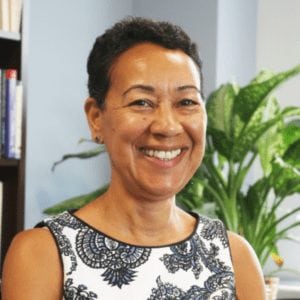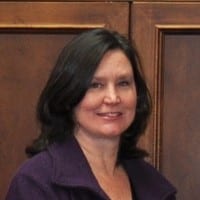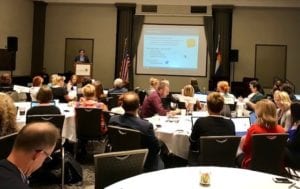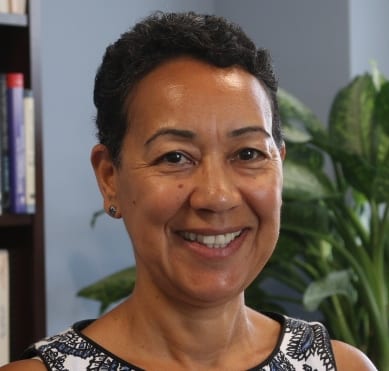
Dr. Loretta Goodwin, AYPF Deputy Director
Equity in education does not just happen. It needs to be thoughtfully planned for and carefully monitored. This was one of the key messages at a recent meeting I attended, which brought together the Innovation Lab Network (ILN) states who are supported by the Council of Chief State School Officers (CCSSO). Each state is charged with creating an equity framework to ensure that all students have equitable access to quality, personalized, competency-based education.
In a conversation led by Annie Holmes, Chief Equity Officer, CCSSO, one state shared their process for setting equity goals. Dana Bullard, Bureau Director of Innovative Programs, Mississippi Department of Education (MDE), noted that their process included reviewing data, collaborating with internal stakeholders across offices at the MDE, and consulting with external leadership in the MS-ILN. She emphasized that the MS State Board of Education goals include having all students proficient and showing growth in all assessed areas, as well as ensuring that every student graduates from high school and is ready for college and careers.

Dana Bullard, Bureau Director of Innovative Programs, Mississippi Department of Education
Dana reminded us that progress abounds in Mississippi: the state has been recognized nationally for their growth in elementary math and reading scores. With regard to college and career readiness, the MDE changed the accountability model, adding an acceleration component to drive open access to Advanced Placement, International Baccalaureate, Cambridge, and dual credit courses. However, the reality remains that there are still many underserved students.
To address this reality, MS is using a number of strategies. One is the use of a Diploma with Endorsement Options, which provides students the information they need to become actively engaged in their education choices and gives them tools to advocate for their career pathways. Practically this means that students in grades seven and eight work with teachers on creating their learning plans.
Another area of emphasis is on social and emotional learning at the middle school level. One of the equity goals focuses on providing increased access to more students and more rigorous coursework for students earlier in their educational pathways, hence the focus not just on high schools, but on starting the journey in middle schools.
There is also a clear understanding that state officials need to target schools and students, and ensure that innovation not only focus on urban and suburban areas, but rural schools as well. One population group that state officials realized they would need to look at closely was the African American male population. They recognized that African American males, who constitute 20 to 25 percent of their total public school population, are over-identified in the category of students with Individualized Education Programs (IEPs), and they struggled with how they were transitioning these students to enable them to have choices in high school.
There was a clear understanding that they needed to change the trajectory of these students’ paths, as the statistics and reality of black boys’ lives are dire: they are more likely to live in poverty than children in other racial and ethnic groups; on national reading and math tests they perform worse than other groups, and they are twice as likely to be unemployed in MS. To this end, in August this year they conducted a meeting at Tougaloo College to inspire more minority males to become teachers. In the state, minority male educators make up only six percent of teachers. At the Tougaloo convening, attended by 75 minority male educators, experts on race and culture in schools discussed the latest research and professional development opportunities. This was a very explicit attempt to not only address the teacher shortage in the state, but to increase the number of minority teachers. Currently minority teachers constitute 27 percent of the workforce; by 2021 MDE wants that percentage to climb to 32 percent.

As she shared these challenge areas, Dana noted the importance of examining data – at the state and schools levels. For them this analysis involved comparing themselves to other parts of the nation, and the recognition that, to move forward effectively, partnerships would be essential. As she observed, “We are looking for partners who can show us great models of innovation.” With regard to addressing the shortage of minority male teachers, Dana shared that this focus is a statewide effort engaged in by many agencies, not just MDE. One community college, for example, is providing a Minority Male Leadership Initiative (M2M), funded by a grant from the U.S. Department of Education. At Hinds Community College, M2M offers a range of support services to African-American males to help them be successful not only academically and career-wise, but also within their communities.
There is also an initiative, funded by the W. K. Kellogg Foundation, bringing together 26 community organizations to change the conditions that young males of color face in the state by providing a cradle to adulthood network of support. Such partnerships are critical, yet even more importantly, states need to think carefully before launching into partnerships to ensure they are partnering with the right organizations and to be clear about the goals for the partnership.
 Before embarking on these partnerships, Dana urged all the states present to conduct a SWOT analysis, looking closely at strengths, weaknesses, opportunities and threats. Once MS engaged in this process, they realized that “we can use data to help change our policies, and make good decisions.” This cemented their commitment to “let everyone have access to these innovative ways to engage all students in education.” Dana provided one piece of advice to her ILN colleagues: “Go through the SWOT chart – really be honest and authentic about where you are.”
Before embarking on these partnerships, Dana urged all the states present to conduct a SWOT analysis, looking closely at strengths, weaknesses, opportunities and threats. Once MS engaged in this process, they realized that “we can use data to help change our policies, and make good decisions.” This cemented their commitment to “let everyone have access to these innovative ways to engage all students in education.” Dana provided one piece of advice to her ILN colleagues: “Go through the SWOT chart – really be honest and authentic about where you are.”
As they honestly assessed education in MS, Dana noted that staff turnover at MDE made her realize that innovation was not seen as part of the whole picture in the strategy, but rather as just a little piece. She realized they need to “talk about innovation as a means to improve; it is not an end.” Having completed their SWOT analysis, they formulated a theory of action. The inputs of this theory of action include facilitating and supporting the MS-ILN-networked improvement communities and providing technical assistance to districts that are interested in exploring innovative programs to personalize learning. They are also focusing on personalizing career and academic counseling through individual success plans. In addition, they are directing a MS Middle School Initiative that includes social, emotional, and academic development (SEAD) in pilot schools and the creation of a statewide middle school task force.
MS’s theory of action includes outputs that have innovative practices spreading across the state, with students actively engaged in choosing and pursuing career and college pathways. There is also an emphasis on the scrutiny of data informing changes in statewide policy. Dana excitedly shared that her phone is already ringing off the hook as educators are calling her to take part in this innovative work!
Phone calls of interest are fine, but Dana stressed that this work is not easy. As she talked about next steps, she shared the range of activities that need to be addressed. She has to collaborate with district leaders to revise the equity plan; she has to communicate the equity goals internally at the state level and with the MS-ILN members. She commented that “Communication is the most difficult thing.” She has to emphasize to her team and to vendors that data needs to be disaggregated. She has to seek partnerships for support and inspiration.
In concluding her remarks, Dana once again reiterated the importance of looking at data to know where you are as a state, and what you need to personalize as you address your challenge areas. She stressed, “We need to look at our state, know what our limitations are – monetary, staffing, perceptions, communications. You need to talk to your partners.” Fortunately, for Dana, she has a supportive network within her state through the MS-ILN, and beyond the MS borders with the group of ILN states who are all dedicated to setting their own equity goals and ensuring that each and every student in their state has access to a quality, personalized education.


